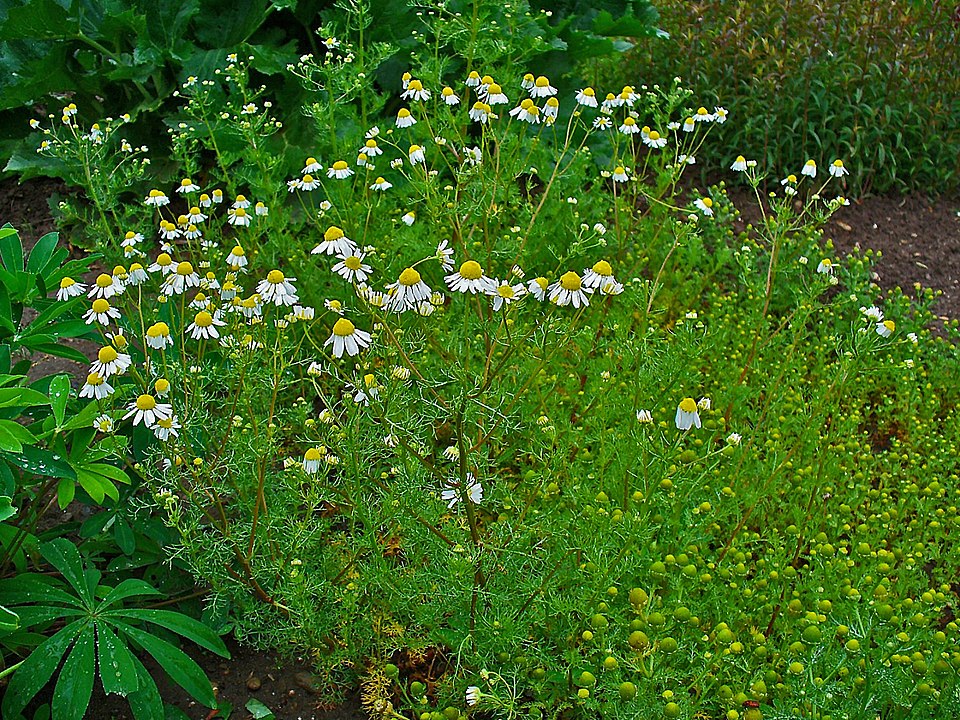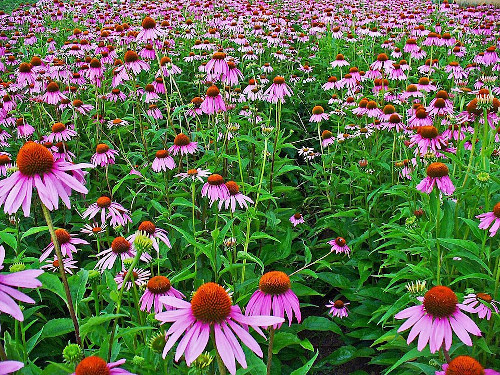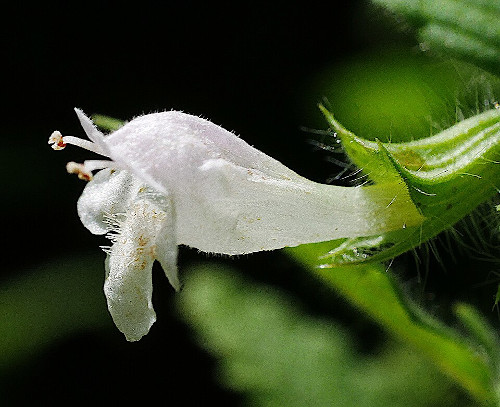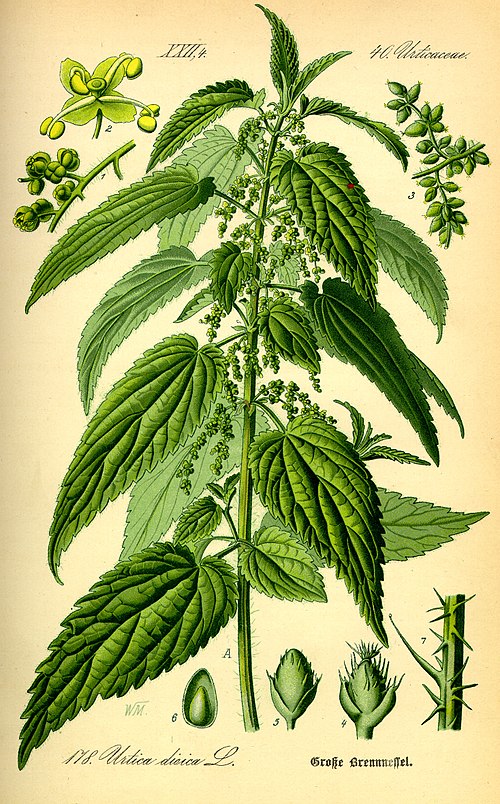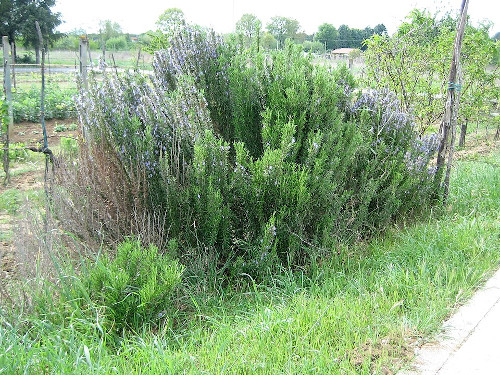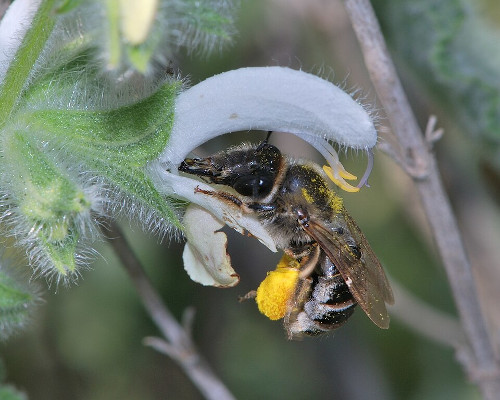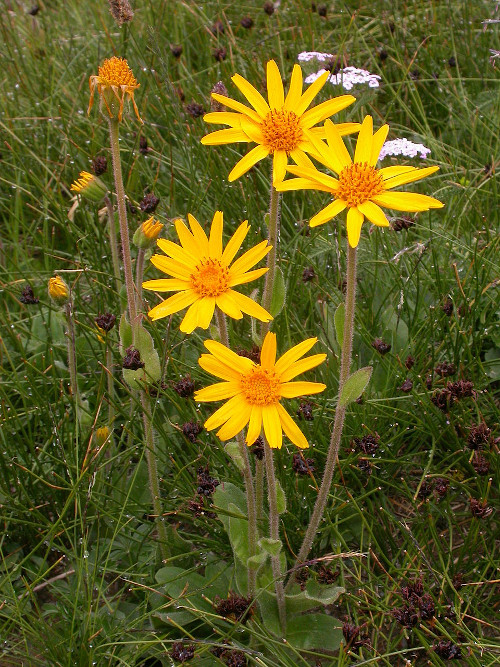 Medicinal plants in hydroponics – opportunities for research and small-scale cultivation – potential and limitations
Medicinal plants in hydroponics – opportunities for research and small-scale cultivation – potential and limitationsThe hydroponic cultivation of medicinal plants enables precise control of environmental parameters and can contribute to the standardization of active ingredient content. In addition to potential advantages for industrial production, such as greater independence from climatic and geographical restrictions, applications in small-scale cultivation are also being discussed. Such systems could enable the local supply of medicinal plants and serve niche markets. Nevertheless, there are considerable scientific and technical challenges. These include, in particular, the insufficiently researched influences of hydroponic cultivation conditions on the synthesis of secondary metabolites, as well as high requirements for hygiene and contamination control in closed systems. In addition, the economic viability of small-scale hydroponic systems must be critically evaluated in comparison to established production methods.
Facts about Matricaria chamomilla
Cultivation
- Peat-free herb soil
- Hydroponic substrates (perlite, rockwool)
Nutritional values per 100g (flowers, dried)
Medicinal Plant
Recognized application: Relief of gastrointestinal complaints, inflammation in the mouth and throat, skin and mucous membrane irritations.
Active compounds: Essential oil (including bisabolol, chamazulene), flavonoids, coumarins, mucilages
Dosage: Pour 150ml hot water over 2-3g dried flowers, steep for 5-10 minutes, several times daily
Special notes: German chamomile (Matricaria recutita) must be distinguished from false chamomile (Anthemis arvensis).
Sources: Commission E Monograph (BfArM), HMPC Monograph EMA/HMPC/234184/2010, German Pharmacopoeia (DAB). Note: This information does not replace medical consultation. For complaints, please consult a doctor or pharmacist.
Important cultivation notes
- Only use fresh, certified seeds (light germinators, do not cover with soil)
- Avoid waterlogging – sensitive to root rot
- Adequate ventilation to prevent fungal infections
- Do not confuse with false chamomile (different active compounds, allergenic potential)
Cultivation steps
- Do not soak seeds – light germinators should only be scattered on moist substrate
- Do not cover with soil, only press lightly
- Place in warm and bright location (18-22°C), keep evenly moist
- Germination after 7-14 days
- After development of 3-4 leaves, transplant into hydroponic system (NFT or drip)
- Regular nutrient solution monitoring (EC 1.0-1.8, pH 6.0-7.5)
- Harvest flower heads from approx. 8 weeks, multiple harvests possible during flowering period
Context:
- Details
- Parent Category: Biology
- Category: Medicinal Plant
-
Also available:

Facts about Echinacea
Cultivation
Cold stratification mimics winter conditions and can break seed dormancy; 4°C for approx. 4 weeks is described as effective in studies.
- Perlite
- Sandy substrates
- Hydroponic rockwool
Active compounds (root & herb)
Medicinal Plant
Recognized application: Support of the body's natural defenses against colds; traditionally used for respiratory infections.
Active compounds: Polysaccharides, alkamides, caffeic acid derivatives (cichoric acid), essential oil
Dosage: Preparations vary (tea, pressed juice, tinctures); use standardized extracts according to manufacturer's instructions
Special notes: Clinical evidence mixed; effectiveness depends heavily on extract quality and plant part used.
Sources: Commission E Monograph (BfArM), HMPC Monograph EMA/HMPC/104631/2005, German Pharmacopoeia (DAB). Note: This information does not replace medical consultation. For complaints, please consult a doctor or pharmacist.
Important cultivation notes
- Germination often irregular – cold stratification improves results
- Long cultivation period: flowers and active compounds only relevant from 2nd year
- Avoid waterlogging and poor ventilation
- Harvest roots only from 3rd year for medicinal use
Cultivation steps
- Pre-chill seeds for 1-4 weeks at approx. 4°C (moist-cold stratification)
- Sow on moist substrate, press lightly (light germinator)
- Germination at 18-22°C after 10-20 days
- After formation of several leaves, transfer to hydroponic system
- Ensure full sun and consistent watering
- From 2nd year, harvest flowers for medicinal use
- Root harvest earliest from 3rd year
Cold stratification
- The general mechanism of cold stratification (imitating winter conditions, breaking physiological dormancy) is well documented (see Baskin & Baskin; Extensions). For Echinacea, there are several studies reporting moist-cold (4°C) for several weeks as effective; at the same time, conservative sources (USDA/guidelines) exist that describe longer periods or even direct sowing without stratification depending on species/batch — hence slight uncertainty in the exact recommended duration (1-12 weeks).
Context:
- Details
- Parent Category: Biology
- Category: Medicinal Plant
-
Also available:

Facts about Lavandula angustifolia
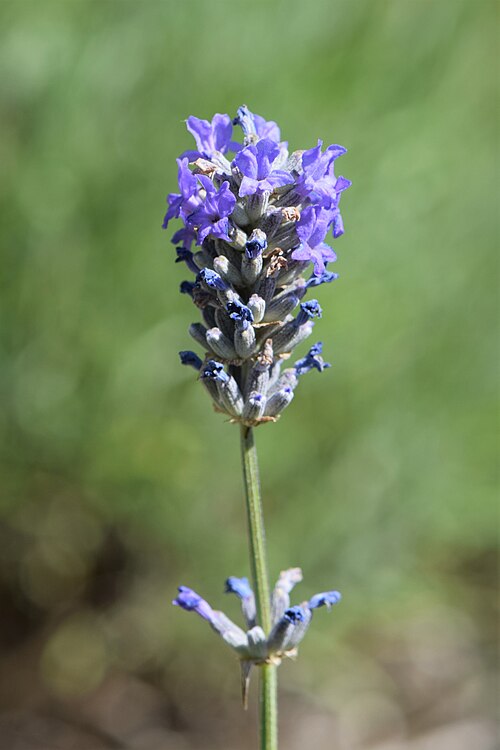
Cultivation
- Coconut fiber
- Rock wool with perlite
Nutritional values per 100g (fresh)
Medicinal Plant
Recognized application: Calming, sleep-promoting, anti-inflammatory, antiseptic, cold support.
Active ingredients: Essential oils (linalool, linalyl acetate), flavonoids, tannins
Dosage: 1–2 tsp dried flowers per cup of tea, 2–3x daily; essential oil only standardized according to manufacturer's instructions
Sources: Commission E Monograph (BfArM), HMPC Monograph EMA/HMPC/4282/2006, DAB. Note: This information does not replace a doctor's visit. For complaints, please consult a doctor or pharmacist.
Important Cultivation Notes
- Avoid waterlogging; roots will rot otherwise
- High light requirement; full sun or strong LEDs
- Monitor hydroponic systems: pH 6–7, EC 1–1.5 mS/cm
- Germination can take 2–4 weeks; cold stratification recommended
Cultivation Steps
- Cold stratify seeds 2–4 weeks (optional, accelerates germination)
- Plant on moist, well-draining substrate, cover lightly (light germinator)
- 18–22 °C, place in bright location, keep evenly moist
- After 14–28 days germination visible; cuttings root within 7–10 days
- Transfer to NFT/Ebb-Flow system
- Cut flowers and leaves regularly, continue cultivation
Context:
- Details
- Parent Category: Biology
- Category: Medicinal Plant
-
Also available:

Facts about Melissa officinalis (Lemon Balm)
Cultivation
- Perlite
- Peat-free herb soil
- Hydroponic rockwool
Nutritional values per 100g (fresh)
Medicinal Plant
Recognized application: Calming, digestive support, flatulence, mild cramps.
Active compounds: Essential oil (citral, geraniol, linalool), flavonoids, tannins
Dosage: 1-2 tsp fresh or dried leaves per cup of tea, 2-3 times daily; use essential oil only in standardized form according to manufacturer's instructions
Sources: Commission E Monograph (BfArM), HMPC Monograph EMA/HMPC/100022/2005, DAB. Note: This information does not replace medical consultation. For complaints, please consult a doctor or pharmacist.
Important cultivation notes
- Avoid waterlogging; roots will rot otherwise
- Harvest leaves regularly, promotes bushy growth
- Monitor hydroponic systems: pH 6-7, EC 1-2 mS/cm
- Full sun or strong LEDs preferred; partial shade possible
Cultivation steps
- Prepare seeds or cuttings
- Plant on moist substrate or rockwool
- Place at 18-22°C in bright location, keep evenly moist
- After 10-14 days germination; cuttings 7-10 days until roots visible
- Transfer to NFT/Ebb and Flow system
- Cut leaves regularly and continue cultivation
Context:
- Details
- Parent Category: Biology
- Category: Medicinal Plant
-
Also available:

Medicinal Plant Extraction – A Brief Overview
This overview shows common medicinal plants, plant parts, extraction methods, carrier oils/solvents and active ingredient notes. All methods are suitable for home users.
Oil Extract (Maceration)
Plant parts: Flowers, leaves
Amount: 50 g dried flowers in 200 ml carrier oil
Duration: 2–6 weeks at room temperature, shake gently daily
Temperature: max. 40 °C, optional gentle water bath
Carrier oil: Olive oil, sunflower oil, jojoba oil
Note: Store in dark place, filter oil after extraction, directly usable for ointments or skin care
Steam Distillation
Plant parts: Leaves, flowers, needles
Amount: approx. 100 g plant material for 200 ml distillate
Duration: 1–3 hours steam treatment
Temperature: 100 °C steam temperature
Note: Oil condenses in water, separate from water, store light-protected in glass bottle
Cold Pressing
Plant parts: Citrus peels, seeds
Amount: 5–10 peels or 50 g seeds per 50 ml oil
Duration: immediate pressing, collect oil yield directly
Temperature: no heating
Note: Aromatic oils, active ingredients preserved, store in dark glass bottle
Tincture (Alcohol Extract)
Plant parts: Leaves, flowers, roots
Amount: 50 g dried plant parts in 200 ml 70% ethanol
Duration: 2–4 weeks at room temperature, shake occasionally
Note: Consider alcohol content, store in dark place, directly usable after filtering or dilute further
Infusion / Tea Extract
Plant parts: Leaves, flowers, roots
Amount: 5 g dried plant parts per 200 ml hot water
Duration: 5–15 minutes steeping time
Temperature: approx. 90–95 °C, not boiling
Note: Only water-soluble active ingredients extracted, heat-sensitive substances may be lost, drink directly or process further
Some Suitable Medicinal Plants
Valerian (Valeriana officinalis)
Plant part: Roots
Methods: Tincture, oil extract
Carrier oil/solvent: 70% ethanol, olive oil
Notes/active ingredients: Calming, sleep-promoting. Low oil yield, main effect from alcoholic extract.
Eucalyptus (Eucalyptus globulus)
Plant part: Leaves
Methods: Steam distillation, oil extract
Carrier oil/solvent: Olive oil, jojoba oil
Notes/active ingredients: Liberating for airways, oil yield approx. 1–2%.
Fennel (Foeniculum vulgare)
Plant part: Seeds
Methods: Steam distillation, oil extract
Carrier oil/solvent: Olive oil, sunflower oil
Notes/active ingredients: Digestive support, oil yield approx. 2–4%.
Hops (Humulus lupulus)
Plant part: Flower cones
Methods: Tincture, oil extract
Carrier oil/solvent: 70% ethanol, olive oil
Notes/active ingredients: Calming, relaxing.
St. John's Wort (Hypericum perforatum)
Plant part: Flowers
Methods: Oil extract, tincture
Carrier oil/solvent: Olive oil, 70% ethanol
Notes/active ingredients: Mood-lifting, anti-inflammatory.
Chamomile (Matricaria chamomilla)
Plant part: Flowers
Methods: Steam distillation, oil extract, tincture
Carrier oil/solvent: Olive oil, sunflower oil, 70% ethanol
Notes/active ingredients: Anti-inflammatory, calming. Oil yield approx. 0.2–1%.
Lavender (Lavandula angustifolia)
Plant part: Flowers
Methods: Steam distillation, oil extract, tincture
Carrier oil/solvent: Olive oil, jojoba oil, 70% ethanol
Notes/active ingredients: Calming, relaxing. Oil yield approx. 2–3%.
Lemon Balm (Melissa officinalis)
Plant part: Leaves
Methods: Steam distillation, oil extract, tincture
Carrier oil/solvent: Olive oil, sunflower oil, 70% ethanol
Notes/active ingredients: Calming, antiviral. Oil yield approx. 0.3–0.5%.
Peppermint (Mentha × piperita)
Plant part: Leaves
Methods: Steam distillation, oil extract, tincture
Carrier oil/solvent: Sunflower oil, olive oil, 70% ethanol
Notes/active ingredients: Refreshing, invigorating. Oil yield approx. 0.5–1.5%.
Lemon / Orange (Citrus)
Plant part: Peel
Methods: Cold pressing, oil extract
Carrier oil/solvent: Olive oil, sunflower oil optional
Notes/active ingredients: Refreshing, mood-lifting. Oil yield approx. 0.5–2%.
Calendula (Calendula officinalis)
Plant part: Flowers
Methods: Oil extract, tincture
Carrier oil/solvent: Olive oil, sunflower oil, 70% ethanol
Notes/active ingredients: Anti-inflammatory, skin care. Oil yield depends on carrier oil.
Rosemary (Rosmarinus officinalis)
Plant part: Leaves
Methods: Steam distillation, oil extract, tincture
Carrier oil/solvent: Olive oil, jojoba oil, 70% ethanol
Notes/active ingredients: Stimulating, promotes concentration. Oil yield approx. 1–2%.
Sage (Salvia officinalis)
Plant part: Leaves
Methods: Steam distillation, oil extract, tincture
Carrier oil/solvent: Olive oil, jojoba oil, 70% ethanol
Notes/active ingredients: Antimicrobial, anti-inflammatory. Oil yield approx. 0.5–1%.
Yarrow (Achillea millefolium)
Plant part: Leaves/flowers
Methods: Tincture, oil extract
Carrier oil/solvent: Olive oil, sunflower oil, 70% ethanol
Notes/active ingredients: Anti-inflammatory, antispasmodic.
Plantain (Plantago lanceolata)
Plant part: Leaves
Methods: Tincture, oil extract
Carrier oil/solvent: Olive oil, sunflower oil, 70% ethanol
Notes/active ingredients: Expectorant, anti-inflammatory.
Thyme (Thymus vulgaris)
Plant part: Leaves/flowers
Methods: Steam distillation, oil extract, tincture
Carrier oil/solvent: Olive oil, jojoba oil, 70% ethanol
Notes/active ingredients: Antibacterial, antiviral. Oil yield approx. 0.5–2%.
Lemon Balm (Melissa officinalis)
Plant part: Leaves
Methods: Steam distillation, oil extract, tincture
Carrier oil/solvent: Olive oil, sunflower oil, 70% ethanol
Notes/active ingredients: Calming, antiviral. Oil yield approx. 0.3–0.5%.
Lettuce (Lactuca sativa)
Plant part: Leaves
Methods: Oil extract, tincture
Carrier oil/solvent: Olive oil, 70% ethanol
Notes/active ingredients: Calming, digestive support.
Chocolate Mint (Mentha × piperita f. chocolate)
Plant part: Leaves
Methods: Oil extract, tincture, steam distillation
Carrier oil/solvent: Olive oil, sunflower oil, 70% ethanol
Notes/active ingredients: Refreshing, invigorating, light chocolate scent.
Licorice (Glycyrrhiza glabra)
Plant part: Roots
Methods: Tincture, oil extract
Carrier oil/solvent: 70% ethanol, olive oil
Notes/active ingredients: Expectorant, anti-inflammatory.
Juniper (Juniperus communis)
Plant part: Berries
Methods: Oil extract, steam distillation
Carrier oil/solvent: Olive oil, jojoba oil
Notes/active ingredients: Diuretic, antibacterial. Oil yield approx. 0.5–1%.
Willow Bark (Salix alba)
Plant part: Bark
Methods: Tincture, oil extract
Carrier oil/solvent: 70% ethanol, olive oil
Notes/active ingredients: Pain relieving, anti-inflammatory.
Hawthorn (Crataegus spp.)
Plant part: Leaves/flowers/berries
Methods: Tincture, oil extract
Carrier oil/solvent: 70% ethanol, olive oil
Notes/active ingredients: Heart strengthening, circulation promoting.
Wormwood (Artemisia absinthium)
Plant part: Leaves/flowers
Methods: Oil extract, tincture
Carrier oil/solvent: Olive oil, 70% ethanol
Notes/active ingredients: Digestive support, rich in bitter compounds.
- Details
- Parent Category: Biology
- Category: Medicinal Plant
-
Also available:

Facts about Urtica dioica
Cultivation
- Compost soil with sand
- Peat-free organic soil
- Coconut fiber with fertilizer
- 2 times daily with spray bottle
- Prefers high humidity
Nutritional values per 100g
Medicinal Plant (Medicinal Plant of the Year 2022)
Recognized application: Nettle herb for irrigation therapy in inflammatory diseases of the urinary tract and for prevention of kidney stones. Nettle root for urination problems in benign prostatic hyperplasia stage I-II.
Active compounds: Flavonoids, caffeic acid derivatives, potassium salts, carotenoids, vitamin C, silicic acid, amines (histamine, serotonin)
Dosage: Tea infusion: 3-4 times daily pour 150ml boiling water over 2-4g dried leaves, steep for 10 minutes
Special notes: In young microgreens, the stinging hairs are not yet fully developed - therefore less "stinging"
Sources: Commission E Monograph (BfArM), HMPC Monograph EMA/HMPC/493013/2009, DAB (German Pharmacopoeia). Note: This information does not replace medical consultation. For complaints, consult a doctor or pharmacist.
Important cultivation notes
- Only use young nettle microgreens (up to approx. 4 weeks)
- Handle with gloves - even young plants can sting
- Blanch briefly before consumption or chew well (destroys stinging hairs)
- Do not use during pregnancy and breastfeeding
- Consult doctor in case of heart failure or impaired kidney function
Cultivation steps
- Soak nettle seeds for 24 hours in cold water
- Prepare nutrient-rich seed starting soil and thoroughly moisten
- Sow seeds evenly and cover lightly with soil (light germinator)
- Place in cool 15-20°C partial shade location
- Germination occurs after 14-21 days with consistent moisture
- Transfer to aquaponic system and maintain high humidity
- After 25-35 days, young nettle microgreens can be harvested with gloves
Context:
- Details
- Parent Category: Biology
- Category: Medicinal Plant
-
Also available:

Facts about Mentha × piperita citrata
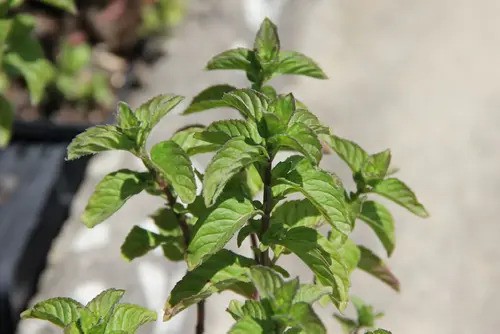
Cultivation
- Peat-free herb soil
- Rock wool with perlite
Nutritional values per 100g (fresh)
Medicinal Plant
Recognized application: Calming, digestive support, mildly antiviral, refreshing for colds.
Active ingredients: Essential oils (limonene, citronellal), flavonoids, tannins
Dosage: Tea: 1–2 tsp fresh or dried leaves per cup, 2–3x daily; essential oil only standardized according to manufacturer's instructions
Sources: Commission E Monograph (BfArM), HMPC Monograph EMA/HMPC/3990/2006, DAB. Note: This information does not replace a doctor's visit. For complaints, consult a doctor or pharmacist.
Important Cultivation Notes
- Avoid waterlogging; roots will rot otherwise
- Place in bright location; prefer sun or strong LEDs
- Monitor hydroponic systems: pH 6–7, EC 1–1.5 mS/cm
- Harvestable multiple times; cut regularly
Cultivation Steps
- Place seeds lightly on moist substrate; consider light germination
- Preferably use cuttings for faster growth
- 18–22 °C, place in bright location, keep evenly moist
- After 10–14 days germination visible; cuttings root after 5–7 days
- Transfer to NFT/Ebb-Flow system
- Harvest leaves regularly; continue cultivation
Essential Oils
Main components: Limonene, citronellal
Extraction: Steam distillation of fresh leaves; yield approx. 0.5–1% of fresh weight
Application: Aromatherapy, tea, cosmetics; oils highly concentrated, only use standardized products.
Context:
- Details
- Parent Category: Biology
- Category: Medicinal Plant
-
Also available:

Facts about Mentha × piperita
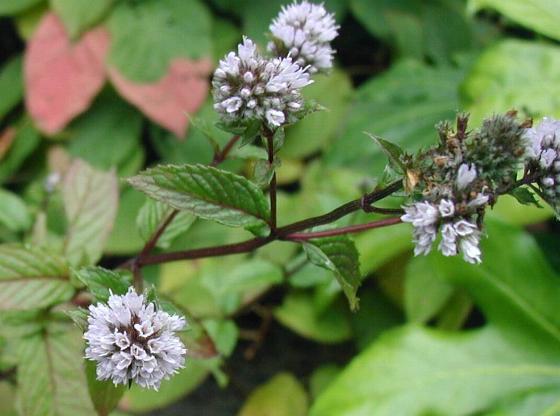
Cultivation
- Perlite
- Peat-free herb soil
- Hydroponic rockwool
Nutritional values per 100g (fresh)
Medicinal Plant
Recognized application: Gastrointestinal complaints, flatulence, mild cramps; peppermint oil externally for headaches or muscle pain.
Active compounds: Essential oil (menthol, menthone), flavonoids, tannins
Dosage: 1-2 tsp dried leaves per cup of tea, 2-3 times daily; use essential oil only in standardized form according to manufacturer's instructions
Special notes: Peppermint is very aromatic, leaves can be easily harvested fresh in hydroponic cultivation.
Sources: Commission E Monograph (BfArM), HMPC Monograph EMA/HMPC/382257/2004, DAB. Note: This information does not replace medical consultation. For complaints, please consult a doctor or pharmacist.
Important cultivation notes
- Avoid waterlogging; roots rot quickly otherwise
- Very vigorous runner growth in hydroponics – consider separation into pots/beds
- Harvest young leaves regularly; pruning promotes bushy growth
- Adjust watering in full sun, otherwise leaves will wilt
Cultivation steps
- Take cuttings or young shoots and let root in water for 12-24 hours
- Plant in moist substrate or hydroponic rockwool
- Bright location, 18-22°C, consistent moisture
- After 2-3 weeks check for solid root system and transfer to NFT/Ebb and Flow if necessary
- Harvest leaves regularly; pruning promotes bushy growth
- Monitor hydroponics continuously: pH 6-7, EC 1-2 mS/cm
Context:
- Details
- Parent Category: Biology
- Category: Medicinal Plant
-
Also available:

Facts about Salvia rosmarinus
Cultivation
- Peat-free herb soil
- Rock wool with perlite
Nutritional values per 100g (fresh)
Medicinal Plant
Recognized application: Circulatory strengthening, circulation-promoting, memory and concentration enhancement, antiseptic, cough and digestive support.
Active ingredients: Rosmarinic acid, flavonoids, essential oils (cineole, camphor, α-pinene, borneol)
Dosage: Tea: 1–2 tsp dried leaves per cup, 2–3x daily; essential oil only standardized according to manufacturer's instructions
Sources: Commission E Monograph (BfArM), HMPC Monograph EMA/HMPC/3678/2006, DAB. Note: This information does not replace a doctor's visit. For complaints, consult a doctor or pharmacist.
Important Cultivation Notes
- Avoid waterlogging; roots will rot otherwise
- Place in bright location; prefer full sun or strong LEDs
- Monitor hydroponic systems: pH 6–7, EC 1–1.5 mS/cm
- Slow growth; patience with germination 14–21 days
Cultivation Steps
- Place seeds lightly on moist substrate; consider light germination
- Cuttings preferred, place in moist substrate
- 18–22 °C, place in bright location, keep evenly moist
- After 14–21 days germination visible; cuttings root after 7–10 days
- Transfer to NFT/Ebb-Flow system
- Cut leaves and shoots regularly, continue cultivation
Essential Oils
Main components: Cineole, camphor, α-pinene, borneol
Extraction: Steam distillation of fresh leaves; yield approx. 1–2% of fresh weight
Application: Aromatherapy, cosmetics, pharmaceutical preparations. Oils highly concentrated; only use standardized products.
Context:
- Details
- Parent Category: Biology
- Category: Medicinal Plant
-
Also available:

Facts about Salvia officinalis
Cultivation
- Peat-free herb soil
- Hydroponic rock wool
- Perlite
Nutritional values per 100g (fresh)
Medicinal Plant
Recognized application: Anti-inflammatory, throat and pharyngeal complaints, digestive support.
Active ingredients: Essential oil (thujone, cineole, camphor), flavonoids, tannins
Dosage: 1–2 tsp fresh or dried leaves per cup of tea, 2–3x daily; essential oil only standardized according to manufacturer's instructions
Sources: Commission E Monograph (BfArM), HMPC Monograph EMA/HMPC/213046/2004, DAB. Note: This information does not replace a doctor's visit. For complaints, please consult a doctor or pharmacist.
Important Cultivation Notes
- Avoid waterlogging; roots will rot otherwise
- Regularly harvest leaves; promotes bushy growth
- Monitor hydroponic systems: pH 6–7, EC 1–1.8 mS/cm
- Place in bright location; prefer full sun or strong LEDs
Cultivation Steps
- Prepare seeds or cuttings
- Plant on moist substrate or rock wool
- 18–22 °C, place in bright location, keep evenly moist
- After 10–20 days germination visible; cuttings root after 7–10 days
- Transfer to NFT/Ebb-Flow system
- Cut leaves regularly, continue cultivation
Context:
- Details
- Parent Category: Biology
- Category: Medicinal Plant
-
Also available:

Facts about Thymus vulgaris
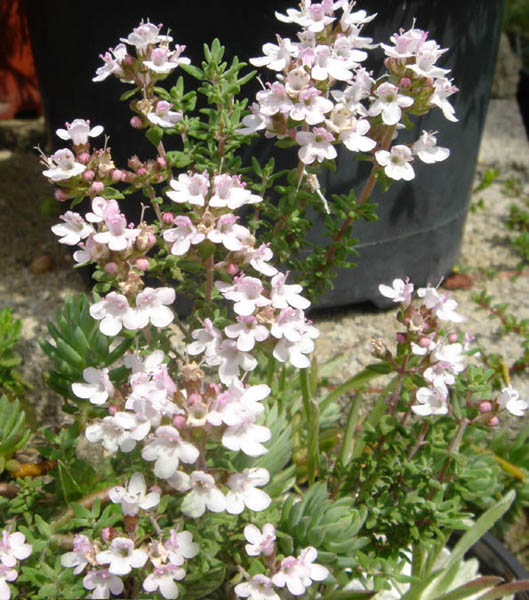
Cultivation
- Peat-free herb soil
- Rock wool
- Perlite
Nutritional values per 100g (fresh)
Medicinal Plant
Recognized application: Anti-inflammatory, antiseptic, cough, bronchitis, digestive support.
Active ingredients: Essential oils (thymol, carvacrol, linalool), flavonoids, tannins
Dosage: 1–2 tsp fresh or dried leaves per cup of tea, 2–3x daily; essential oil only standardized according to manufacturer's instructions
Sources: Commission E Monograph (BfArM), HMPC Monograph EMA/HMPC/214514/2004, DAB. Note: This information does not replace a doctor's visit. For complaints, please consult a doctor or pharmacist.
Important Cultivation Notes
- Avoid waterlogging; roots will rot otherwise
- Cut leaves regularly; promotes bushy growth
- Monitor hydroponic systems: pH 6–7, EC 1–1.8 mS/cm
- Place in bright location; prefer full sun or strong LEDs
Cultivation Steps
- Prepare seeds or cuttings
- Plant on moist substrate or rock wool
- 18–22 °C, place in bright location, keep evenly moist
- After 14–21 days germination visible; cuttings root after 7–10 days
- Transfer to NFT/Ebb-Flow system
- Cut leaves regularly, continue cultivation
Context:
- Details
- Parent Category: Biology
- Category: Medicinal Plant
-
Also available:


